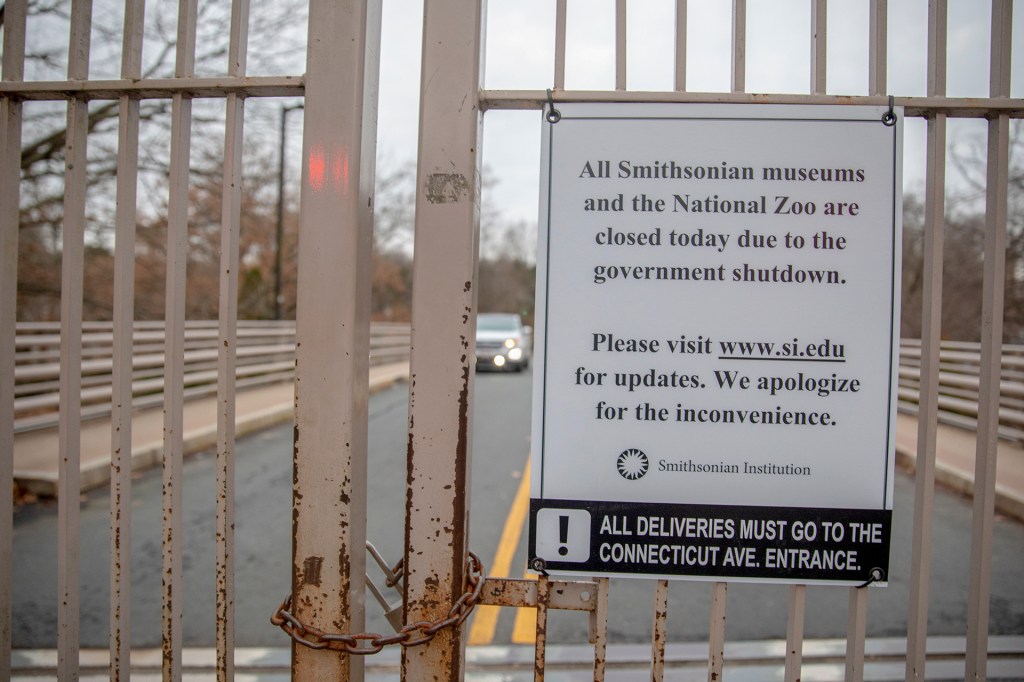Border Fight

In early January, President Donald Trump traveled to McAllen, Texas. He was there to make his case for building a wall along the southern U.S. border.
“What [we] need more than anything is the barrier, the wall,” Trump said. “Whether it’s steel or concrete . . . we need a barrier.”
The president made his remarks alongside politicians, police officers, and border patrol agents. They were overlooking the Rio Grande. This river is the only thing that separates McAllen from Mexico (see map).
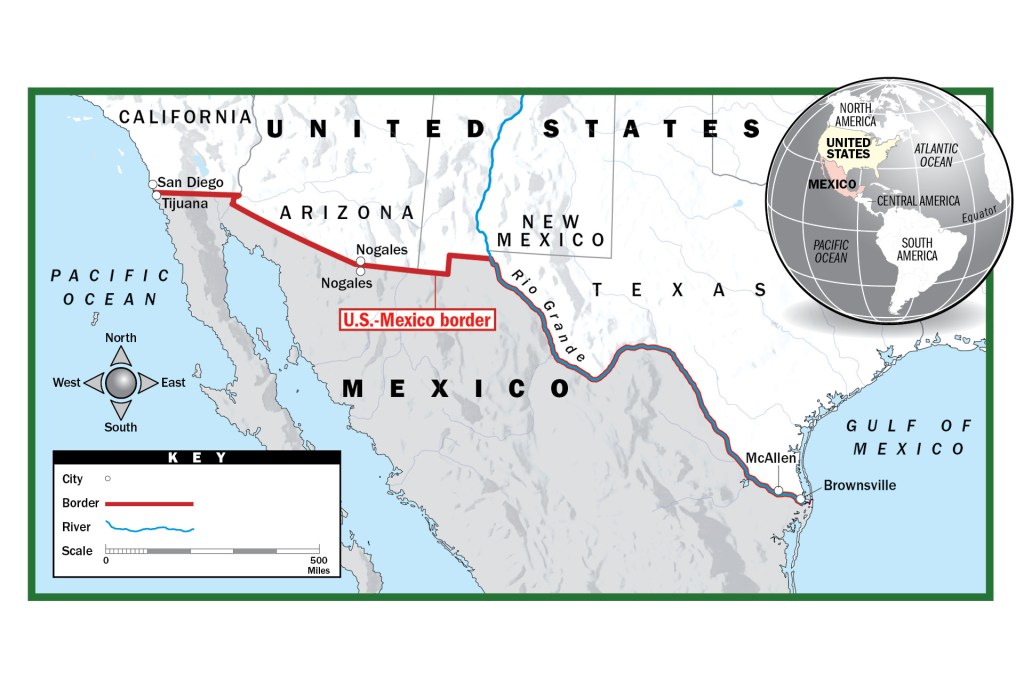
Trump has been calling for the U.S. to build a border wall since 2014, long before he ran for president. It became a central promise of his presidential campaign. Trump thinks a wall is needed to stop immigrants
immigrant
 FOTOG/GETTY IMAGES
a person who comes to a country to live there
(noun)
The immigrants were greeted by the Statue of Liberty.
from entering the country illegally. He says the wall will protect Americans from crime, drugs, and terrorism.
FOTOG/GETTY IMAGES
a person who comes to a country to live there
(noun)
The immigrants were greeted by the Statue of Liberty.
from entering the country illegally. He says the wall will protect Americans from crime, drugs, and terrorism.
“Whether it’s steel or concrete, we need a barrier.” — U.S. President Donald Trump
But when Trump arrived in McAllen on January 10, he had yet to secure the $5.7 billion he said was needed to start construction. And it did not look like he would get it.
In December, Congress passed a spending bill to keep the government running. Trump refused to sign it, because it didn’t contain money for the wall. The government went into partial shutdown.
When the new session
session
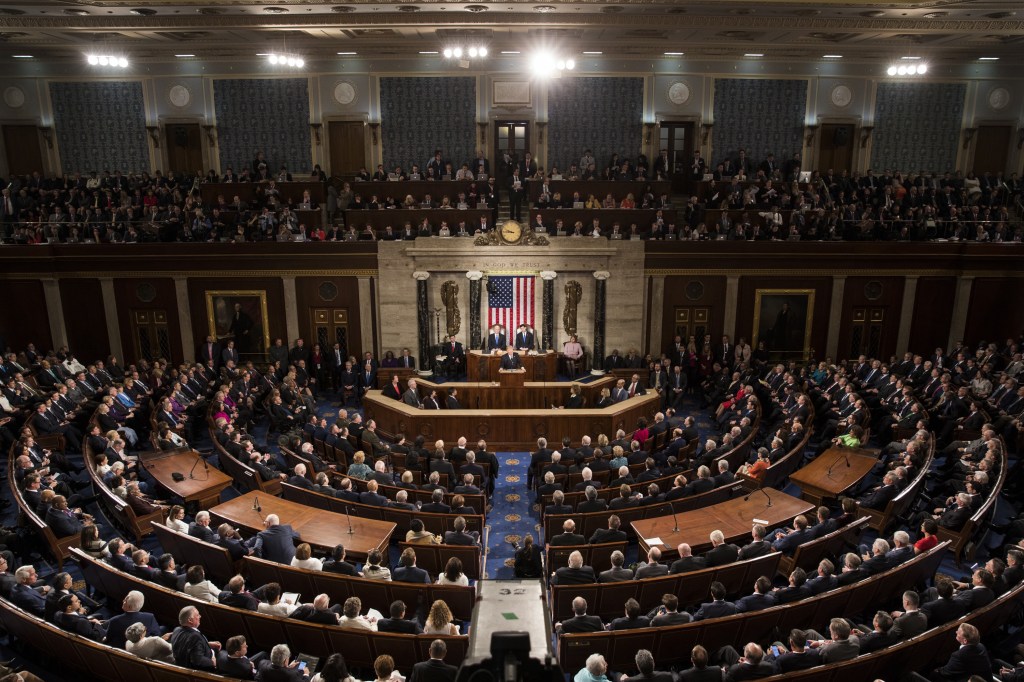 SAMUEL CORUM/ ANADOLU AGENCY/GETTY IMAGES
the period between the first and last meeting of a lawmaking group
(noun)
Congress passed new tax legislation during its last session.
of Congress opened, on January 3, lawmakers in the U.S. House of Representatives passed bills to reopen parts of the government. Those bills included money for border security but not for a wall. But Trump said he would not consider any solution that didn’t include money for a border wall. So the shutdown continued.
SAMUEL CORUM/ ANADOLU AGENCY/GETTY IMAGES
the period between the first and last meeting of a lawmaking group
(noun)
Congress passed new tax legislation during its last session.
of Congress opened, on January 3, lawmakers in the U.S. House of Representatives passed bills to reopen parts of the government. Those bills included money for border security but not for a wall. But Trump said he would not consider any solution that didn’t include money for a border wall. So the shutdown continued.
On January 8, Trump went on live TV to address the nation. Speaking from the White House, he called on Democratic lawmakers to support the wall and end the shutdown.
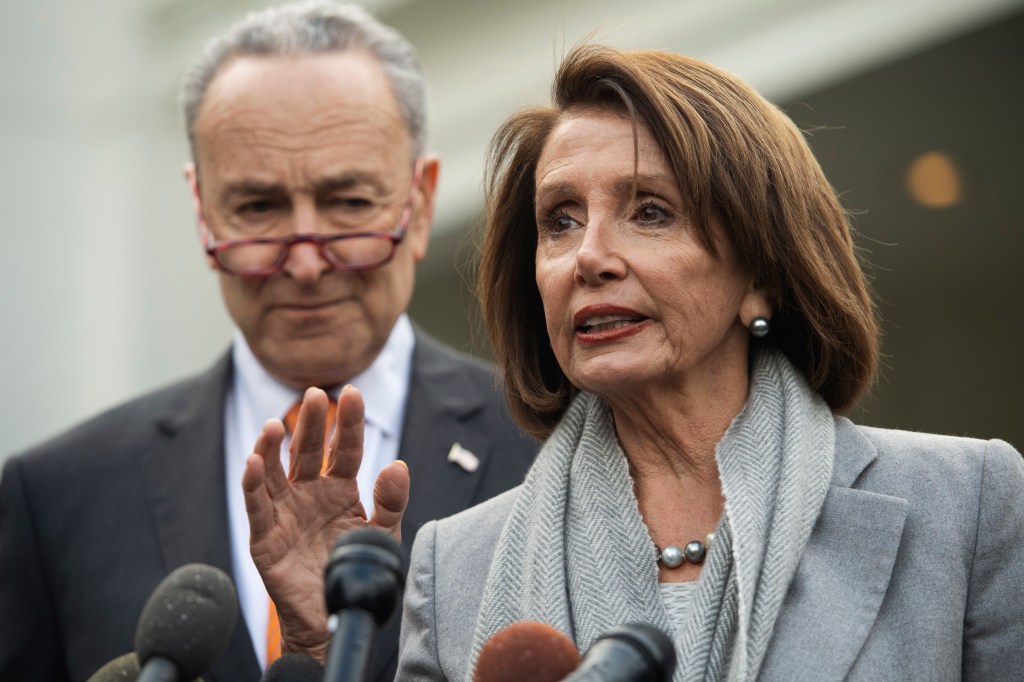
NO DEAL House Speaker Nancy Pelosi and Senate minority leader Chuck Schumer address reporters after a meeting with Trump.
SAUL LOEB—AFP/GETTY IMAGESMinutes later, Democratic leaders Nancy Pelosi and Chuck Schumer responded in a televised address of their own. Pelosi is Speaker of the House. “We all agree that we need to secure our borders,” she said. She noted that Democrats have different ideas about the best way to do that. These ideas include investing in new technology to scan cars as they cross the border, hiring more people to facilitate immigration at the border, and funding “more innovation to detect unauthorized crossings.”
Schumer spoke next. He leads the Democrats in the U.S. Senate. “We can secure our border without an expensive, ineffective wall,” he said. “And we can welcome legal immigrants and refugees
refugee
 ERIC LAFFORGUE/GETTY IMAGES
a person who flees his or her home country for safety
(noun)
Many refugees from Syria now live in camps far from home.
without compromising safety and security.” He added, “The symbol of America should be the Statue of Liberty, not a 30-foot wall.”
ERIC LAFFORGUE/GETTY IMAGES
a person who flees his or her home country for safety
(noun)
Many refugees from Syria now live in camps far from home.
without compromising safety and security.” He added, “The symbol of America should be the Statue of Liberty, not a 30-foot wall.”
Coming to America
The U.S. and Mexico share a border that is nearly 2,000 miles long. From west to east, it runs below California, Arizona, New Mexico, and Texas. The border includes 1,250 miles of the Rio Grande, a natural barrier. Human-made barriers already block 654 miles of the border. These include steel fences and metal posts that prevent vehicle crossings. Trump wants to build a wall 1,000 miles long. It would replace some of the existing barrier and add a barrier where currently there is none.

ON THE BORDER A steel fence separates Nogales, Arizona, and Nogales, Mexico.
SUSAN SCHULMAN—BARCROFT IMAGES/BARCROFT MEDIA/GETTY IMAGESTo enter the U.S. legally, a person most go through an official entry point. He or she must also get permission from the U.S. government.
The number of people illegally crossing the southern border has been dropping for nearly two decades, according to U.S. Customs and Border Protection. But in the last few years, the number of families and children asking for asylum in the U.S. has skyrocketed. (An asylum seeker is a person who has fled his or her country in search of safety in a new country.) Recent figures show that each month, about 31,188 families and children traveling alone sought to enter the U.S. Just two years before, only about 13,210 families and children each month sought entry. That’s an increase of 136%.
Three out of four of these people are from Guatemala and Honduras. In recent years, these Central American countries have suffered from violence and political unrest.

SEEKING SAFETY In June, a family from Honduras waits on the Mexican side of the border, near Brownsville, Texas, to be admitted into the U.S.
JAHI CHIKWENDIU—THE WASHINGTON POST/GETTY IMAGESExperts say one way to reduce the number of people seeking to enter the U.S. is to support people in their home countries. In October, a group of more than 7,000 migrants
migrant
 FOTOG/GETTY IMAGES
a person who moves from one place or country to another
(noun)
In the 1800s, many migrants entered the United States through Ellis Island, in New York City.
traveled on foot through Mexico on their way to the U.S. border. Mexican president Andrés Manuel López Obrador proposed a solution. He called on Mexico, Canada, and the U.S. to work together to ease poverty and end violence in Mexico and Central America.
FOTOG/GETTY IMAGES
a person who moves from one place or country to another
(noun)
In the 1800s, many migrants entered the United States through Ellis Island, in New York City.
traveled on foot through Mexico on their way to the U.S. border. Mexican president Andrés Manuel López Obrador proposed a solution. He called on Mexico, Canada, and the U.S. to work together to ease poverty and end violence in Mexico and Central America.
“In this way, we confront the phenomenon of migration,” he said. “Because he who leaves his town does not leave for pleasure but out of necessity.”
Where It Stands
On January 19, Trump said that if Democrats agreed to provide the $5.7 billion for the wall, he would give temporary protection to some immigrants who had been brought to the U.S. illegally when they were children. Democrats rejected this proposal.
At press time, the government shutdown was in its fifth week. Some 800,000 federal government employees, including border agents, continue to go without a paycheck, whether or not they are required to come to work. The shutdown is now the longest in U.S. history.
Meanwhile, Mexican and Central American migrants continue to make their way to the States. On his visit to McAllen, Texas, Trump talked about declaring a national emergency at the border. Such a move would reopen the government. It could also allow construction to begin on the wall, confronting what he calls a “growing humanitarian and security crisis.”
“He who leaves his town does not leave for pleasure but out of necessity.” — Mexican President Andrés Manuel López Obrador
But like the rest of the country, people in McAllen have differing opinions about the wall. When Trump arrived in town, he was met by protestors and supporters. Some held signs that said “No Border Wall.” Others chanted, “Build That Wall, Build That Wall.”
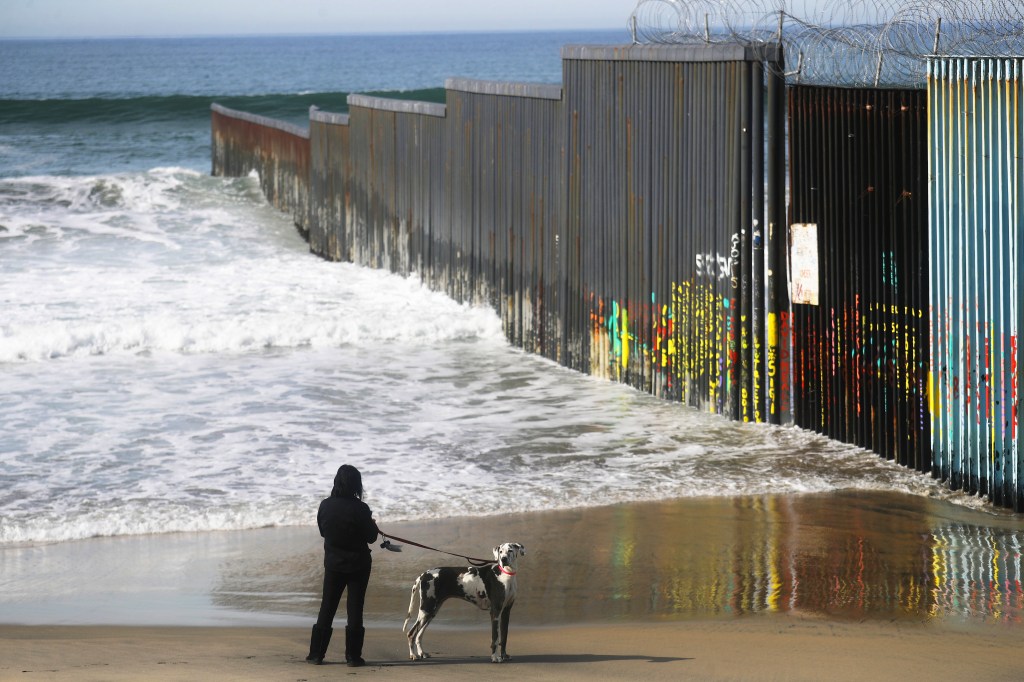
END OF THE LINE A section of fence separating Tijuana, Mexico, from San Diego, California, extends into the Pacific Ocean.
MARIO TAMA—GETTY IMAGESJim Darling is mayor of McAllen. The city is home to the largest immigration processing center in the country. “We don’t feel a crisis in our city,” Darling told TIME. “McAllen is the safest city in the state of Texas.”
Even some who support reducing immigration doubt that a wall is the answer. Mark Krikorian is executive director of the Center for Immigration Studies. In his view, the most “pressing crisis” is the rise of families coming to the U.S. from Central America. “Border barriers,” he says, “are not the whole solution. They were never going to be the whole solution.”
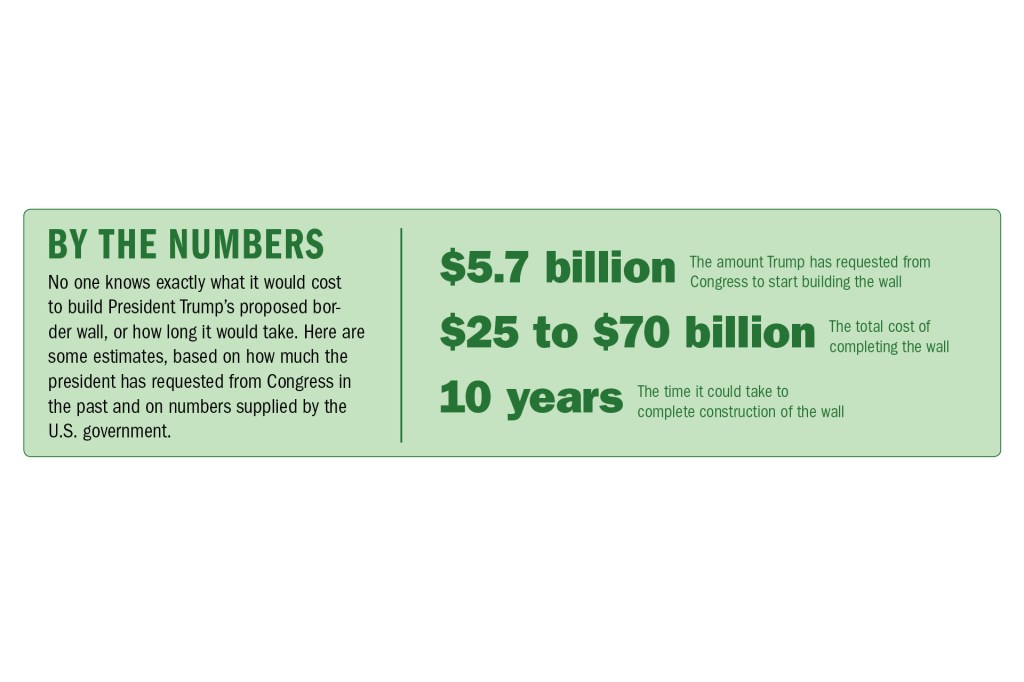
Update: On January 25, President Donald Trump announced a deal to reopen the government until February 15.





